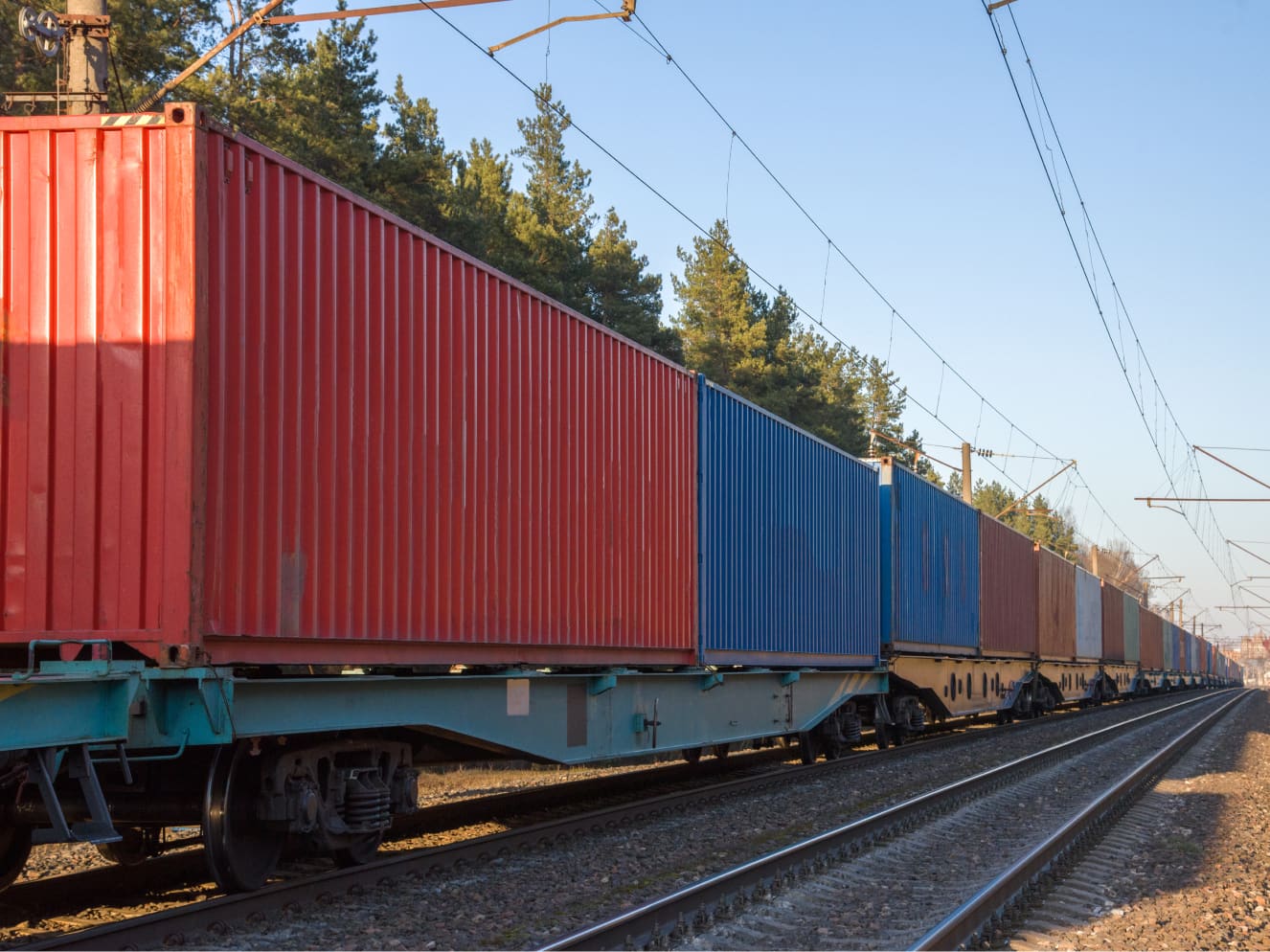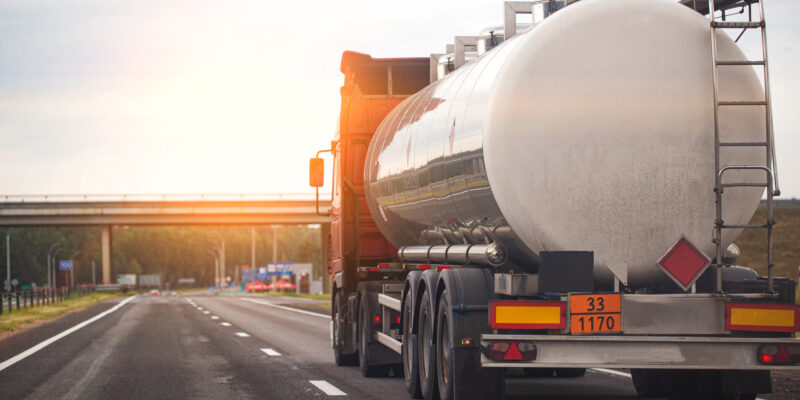Building smarter chemical supply chains with rail, bulk, and intermodal shipping

When a polar vortex slams into the Midwest or a flooded river halts barge traffic up the Mississippi, many logistics operations go into crisis mode. But for chemical shippers, these disruptions aren’t the exception, they’re part of the job.
Compared to consumer packaged goods (CPG) that are packed and shipped in boxes, most chemicals can be shipped in a pipeline, barge, bulk truck, railcar, tote, or drum. The same product might have completely different end uses and can be transported via many different modes. That diversity is what makes chemical shipping one of the most complex supply chains.
And that complexity is exactly why rail, bulk, and increasingly, intermodal shipping are foundational for chemical logistics. These modes offer the scale, cost-efficiency, and flexibility required to move large volumes of sensitive materials safely and reliably. But they also come with unique planning requirements, regulatory obligations, and operational risks, especially when disruptions hit.
Why chemical shippers rely on rail, bulk, and intermodal
From temperature-sensitive adhesives to flammable solvents and corrosive liquids, chemical products are often high-risk and high-volume. A single railcar can carry the equivalent of four bulk trucks, while bulk tankers reduce handling and contamination risks. This makes both modes critical for long-haul efficiency, cost reduction, and monitoring emissions.
“Some of our largest chemical customers rely heavily on rail,” said Greg Umstead, vice president of commercial operations at Uber Freight. “180,000-pound loads are not something you can replicate cost-effectively over the road.”
But the real power of rail and bulk lies in their flexibility. When barge routes are compromised, shippers can reroute to trucks. When truckload capacity tightens, shipments can move via ISO tank on rail. And when cold snaps threaten water-based products, shipments can easily be expedited or paused before damage occurs.
Intermodal shipping has emerged as a valuable complement to bulk and rail by combining rail’s cost-effective long-haul capacity with the accessibility of truckload. It provides an efficient alternative when traditional capacity tightens or emissions goals rise.
Operational challenges in chemical shipping
Despite the strategic value of rail, bulk, and intermodal, chemical shipping isn’t without its hurdles. Equipment constraints, complex documentation, transloading, and strict hazmat compliance all create friction.
“Most chemical supply chains don’t have a neat, centralized distribution model,” said Jeff Brasier, vice president, strategic customer success at Uber Freight. “You’ve got job sites, ports, and production facilities, many of which require specialized receiving or can’t accept certain modes at all.”
Temperature swings can also create major risk. “A lot of these chemicals are water-based, so if they freeze, they’re compromised,” Greg said. “You don’t want a bulk truck sitting in a yard over the weekend in sub-zero weather.”
Uber Freight’s approach: Multimodal expertise, real-time data, and proactive planning
Whether a load moves in a railcar, bulk truck, or ISO tank, chemical shippers need absolute confidence that the right equipment, and the right contingency plan, are in place before the product ever leaves the plant. Uber Freight builds that assurance into every shipment.
The TMS is purpose-built for rail, bulk, and intermodal—shippers see every load, including railcars, tankers, ISO tanks, and van conversions in a single dashboard enriched with risk scores, live location pings, and weather overlays. If a blizzard threatens a bulk lane or flooding closes a barge terminal, the system flags the risk in advance so planners can pre-position inventory, reroute to truck, or shift to intermodal.
The Uber Freight team has deep expertise in the chemical domain and mode-specific programs:
- Dedicated rail-car visibility and a vetted network of hazmat and food-grade bulk carriers keep high-volume lanes running smoothly, even in tight markets.
- Nationwide ISO-tank capacity gives mid-market shippers access to rail without the cost of a private fleet, while large shippers use it to de-risk long-haul corridors and cut line-haul spend.
- OptiPro co-loading leverages an optimization engine in the TMS to pair compatible chemical freight from different shippers on shared trucks or railcars, trimming empty miles and emissions without compromising product integrity.
- For companies focused on monitoring emissions, the GLEC-certified sustainability dashboard helps model greener lane alternatives, like converting to rail or intermodal.
“The chemical industry is unique in that shippers compete, buy, and sell to each other,” Jeff said. “They’re used to collaborating, and that allows Uber Freight to create network-wide efficiencies that wouldn’t be possible in other verticals.”
Proven results in the field
A global chemical producer worked with Uber Freight to integrate real-time emissions monitoring, SAP connectivity, and KPI analytics across its rail, bulk, and intermodal network, which drove a 3.6x ROI across the company’s key markets.
A large chemical producer partnered with Uber Freight to standardized planning for 475 facilities. By leveraging Uber Freight’s rail, bulk, and intermodal capacity programs, they achieved $12 million in annual savings and tighter OTIF performance.
Uber Freight has also recently created a regional operations center to serve a large number of chemical customers out of a central office. This has allowed the team to grow the talent serving chemical customers, and bring best practices and deep expertise to client engagement operations.
When chemical shippers work with Uber Freight, they gain a strategic logistics partner that can help efficiently execute planning to obtain the right mode and the right equipment at the right time.
A smarter chemical supply chain
As one of the largest non-asset IMC in North America, Uber Freight offers shippers access to 90,000+ containers in both up and down markets, as well as capacity in Mexico and Canada. We partner with all Class 1 railroads, providing unmatched flexibility to streamline shipments. This allows our team to lower costs and keep your supply chain moving without disruptions.
Whether it’s navigating hurricane season, coordinating transload operations, or monitoring Scope 3 emissions, chemical shippers need clarity, speed, and strategy. Rail, bulk, and intermodal shipping will continue to be the foundation of chemical logistics, but only when supported by modern tools and strategic partners.
Uber Freight delivers flexible, cost-effective intermodal transportation options for chemical shippers of all shapes and sizes.

